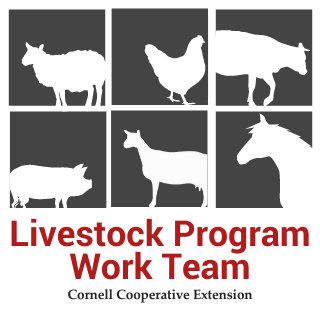

Upcoming Events
About Cattle
According to the latest report from the USDA, as of January 1st, 2022 there are approximately 92 million cattle and calves in the United States. Down 2% from 2021. The United States tops the list of the globally leading beef and veal producing countries: the U.S. produced about 12.6 million tons of beef and veal (net carcass weight) as of 2021. Compared to sheep, pigs, and chickens, cows are very expensive to raise and require much more water, feed, and land per calorie generated. Though beef production fluctuates from year to year, there has been a positive trend in beef production in the last several years in the United States.

News
Every summer, I get calls from folks wondering why there are nearly microscopic bugs covering the walls and floors of their feed storage areas and their feed buckets. Looking for a cause, many easily trace it back to their bags of grain. The dust on the exterior of the affected bags appears as if it's moving in a gentle breeze, and there may be a thick layer of dust coating the inside of the feed bags. On closer inspection, it's apparent that the dust is actually hundreds of thousands of nearly microscopic grey-brown looking mites. These are grain mites.
Breeding is an important time of year for beef producers in that its success will determine the number of calves on the ground the following season. Many beef enterprises run on thin margins, and a cow that's not producing a calf is not pulling her weight.
With the costs of doing business going up, farms that raise beef calves need to take steps to help increase the return on investment from their feeders. This can be achieved through pre-conditioning, or setting their animals up for success when moved to the feedlot. The move to the feedlot from a pasture-oriented home is a huge change, and while there will naturally be depressions in rate of gain, there are also chances for increased illness and death of animals that are not pre-conditioned. No one wants an animal to die while in their care - both from welfare and financial standpoints. While some market channels don't pay high premiums for pre-conditioning, others will because they understand the value added by the farmer from birth through the pre-weaning period.
There are a few parasites that producers will interact with over the course of keeping stock. One of those is the humble louse. Lice are small, about the size of a pinhead, and can be hard to spot unless either a.) you're looking for them or b.) they're in such large numbers that they are causing discomfort to the animal.
The page linked here from a butcher in VA offers concise descriptions of what’s possible on lambs, pigs, and cattle, along with sample cut sheets.
For farmers seeking to regain some control over butchering their animals, there is a middle option between being at the whim of slaughterhouse schedules and opening your own slaughterhouse.
In this interactive discussion, we aim to help you regain some sense of control over how, when and where you get your livestock processed, and how you sell meat to customers.
Learn the primary considerations for opening a red meat slaughter and processing facility in NYS, from infrastructure to regulations and from labor to financing.
This webinar covers how to effectively work with your local meat processor, communicate cut instructions, and understand the difference between USDA and custom cutting. View Recording
New this year, Northeast grazing-focused organizations, including Maine Grass Farmers Network, Granite State Grazers, The Livestock Institute, Vermont Grass Farmers Association and the Cornell Cooperative Extension Capital Agriculture & Horticulture Program (hosts of Winter Greenup NY), are hosting a region-wide grazing conference.
Join us for an eight-part virtual series for those new or interested in livestock production.
Join us for an eight-part virtual series for those new or interested in livestock production.
Join us for an eight-part virtual series for those new or interested in livestock production.
Join us for an eight-part virtual series for those new or interested in livestock production.
Join us for an eight-part virtual series for those new or interested in livestock production.
Join us for an eight-part virtual series for those new or interested in livestock production.
Northern NY livestock educators will be holding a 2-part BQA training on Friday, May 20th and Saturday, May 21st. Friday night will be a virtual Zoom meeting for level 1 certification or re-certification and Saturday will be level 2 certification.
Join us for an eight-part virtual series for those new or interested in livestock production.
Main topics:
Grazing plans
Manage pasture trouble spots
How to make high-quality baleage
Main topics:
Grazing plans
Manage pasture trouble spots
How to make high-quality baleage
Feeding a balanced diet to beef females in the last trimester of pregnancy through the breeding season is critical.
Learning to properly manage carcasses and slaughter waste is a critical skill for livestock producers and meat processors alike. In this webinar, CCE Educator Lynn Bliven covers the essentials to avoid environmental contamination and human safety hazards.




